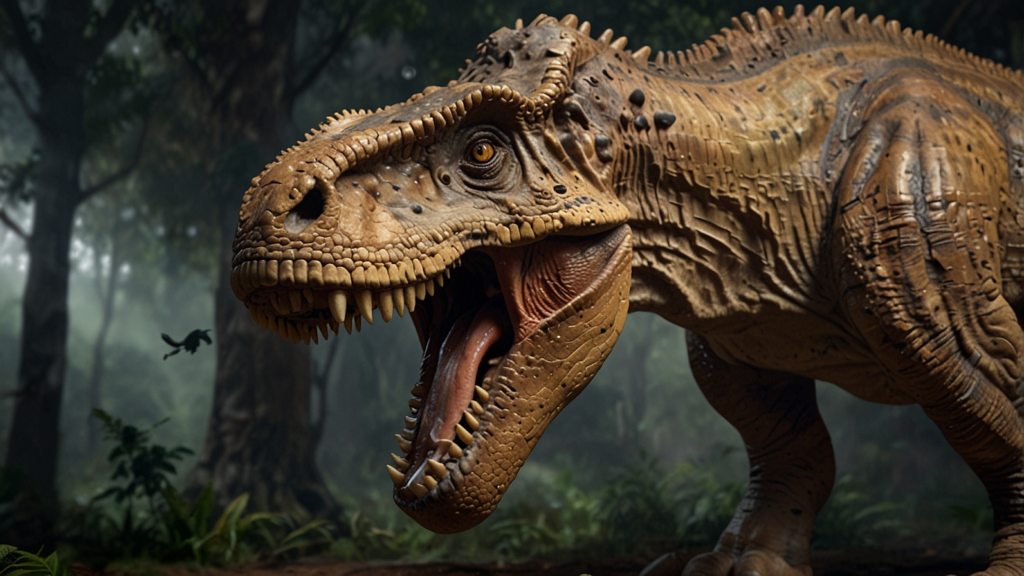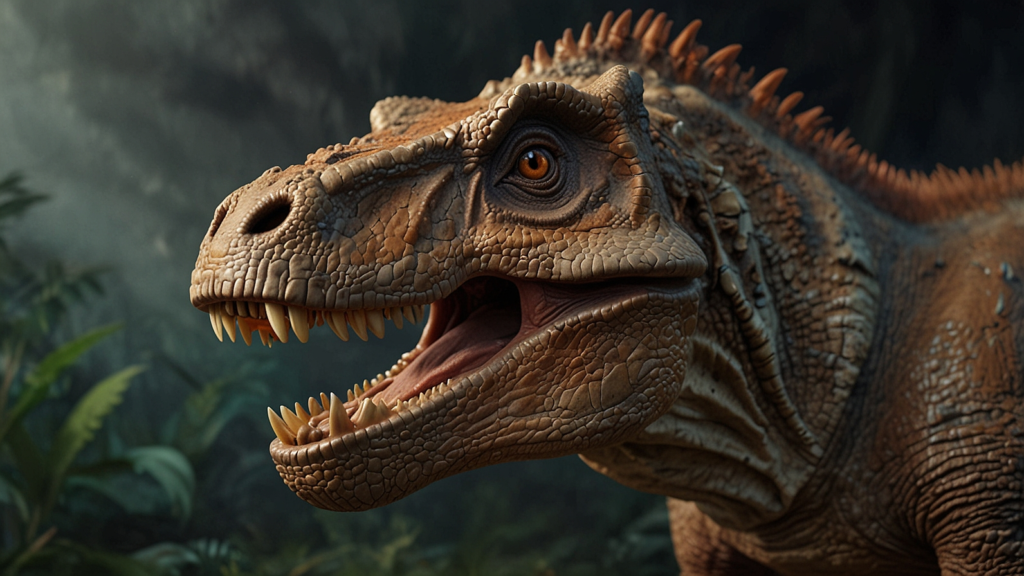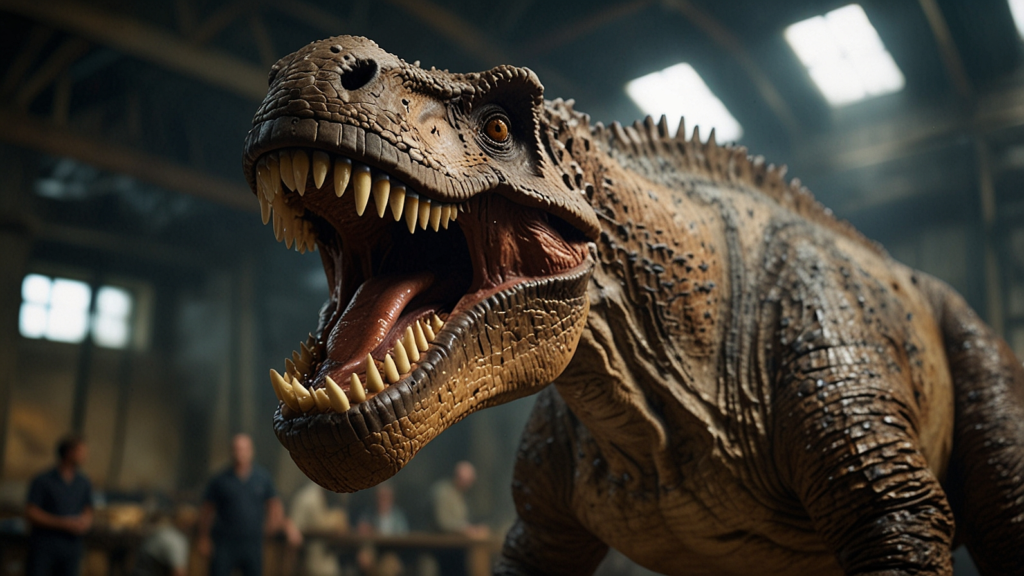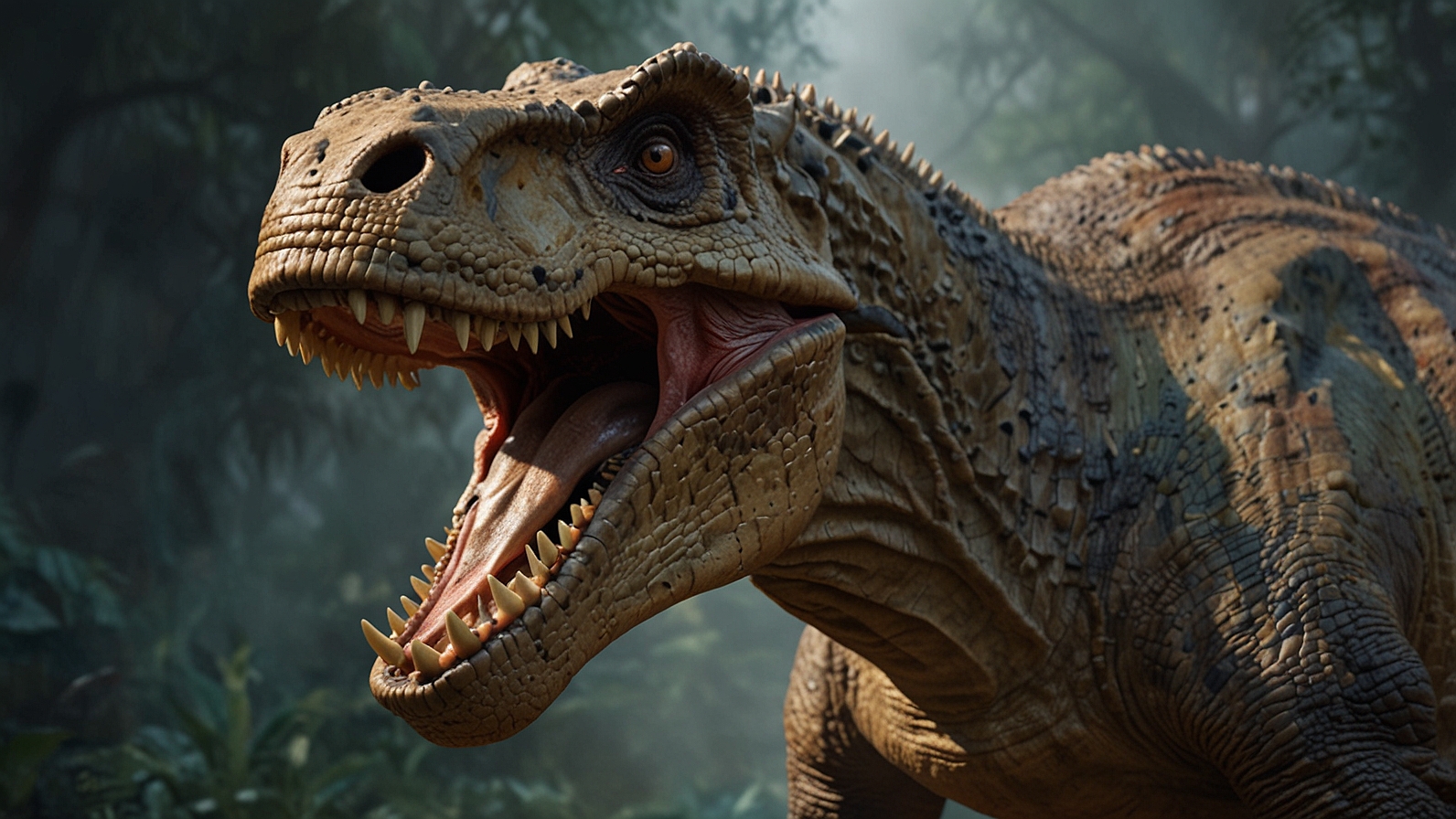Introduction
The question “What dinosaur has 500 teeth?” This strange question leads to a very interesting area of paleontological study. During their time, dinosaurs could use many special ways to survive in ancient communities because they appeared in different sizes and had different body features. Some of the strangest things about some dinosaurs are their tooth kinds, which they use differently to eat other food types. While there are a variety of species that are known for having numerous teeth, there is one dinosaur in particular that stands out when it comes to the sheer number of teeth in its mouth: the hadrosaur, or duck-billed dinosaur.
The hadrosaur family survived as herbivorous dinosaurs thanks to its beaked mouth and oversized tooth bank. From all hadrosaur dinosaur species, one has a jaw with so many teeth that it could total 500 pieces. This herbivore couldn’t eat its daily meals without having both a massive mouth and 500 sharp-edged teeth. But what makes the question “What dinosaur has 500 teeth?” The real purpose of these teeth in daily life draws the most interest of researchers.
The Hadrosaur and Its Remarkable Teeth
So, what dinosaur has 500 teeth? The Hadrosauridae family from the Late Cretaceous period between 75 and 65 million years ago holds our answer. These plant-eating dinosaurs gained fame because of their many flattened teeth, which worked to grind tough vegetation. Most people recognize Parasaurolophus, which belongs to Hadrosaurid dinosaurs that lived across North America during its existence. Two closely related hadrosaurids were also active in this period – Edmontosaurus and Maiasaura.

These animals had designed their chewing system to function properly. Some hadrosaur species displayed all 500 teeth in their jaws simultaneously, but other populations displayed different numbers. Their teeth kept growing and replaced themselves so that these plant-eating dinosaurs stayed able to chew down plants, which made up most of what they ate throughout their lifetime. It’s this continual regeneration of teeth, combined with the large number present at any given time, that makes the answer to the question “What dinosaur has 500 teeth?” so remarkable.
Structure and Function of Hadrosaur Teeth
Understanding their basic design helps. Hadrosaur teeth formed a compact chewing surface. Most dinosaur families have teeth that are differently shaped than the flat molars observed here. Their special teeth worked best for processing tough, green leaves, green ferns, and plant seeds. Just like a well-organized row of filing cylinders, the dinosaur placed many teeth both on its upper and lower jaws.
The hadrosaur stands out because it has a special grouping of teeth. A dental battery means the teeth of these animals are closely packed for strong chewing performance. Every tooth was made to work together perfectly to create the most effective chewing process. Since having around 500 teeth, the hadrosaur could eat plenty of plants each day. Their teeth arrangement made daily grinding easy, helping them break down plants before they could eat them.

Evolution of the Hadrosaur’s Teeth
So, what dinosaur has 500 teeth, and why did it develop such a complex dental system? The way dinosaurs evolved in eating and finding food tells us why they grew many teeth. Because they could feed on what little plant material their habitats offered, the hadrosaurs became popular as herbivore dinosaurs.
Instead of happening by chance, the dinosaur developed 500 teeth to help it eat difficult plant foods. Carnivorous dinosaurs could bite into meat because their teeth are sliced and torn, while hadrosaur teeth cut and ground plants. Its dental structure needed to stand strong and resist damage from everyday use. The 500 teeth the big hadrosaurs developed over time matched the plant types in their environment during Late Cretaceous times.
Teeth as Tools for Survival
It matters to research why so many teeth help dinosaurs survive their feeding habits. Hadrosaurs needed lots of chewing power. Through chewing, the animal converts tough plant fibers into simpler forms that can be easily processed. The dinosaur needed 500 teeth to handle its massive amounts of vegetation and extract enough nutrients from its food.
Our understanding goes beyond the simple total number of teeth they had. The hadrosaur teeth worked together like a grinder tool to slowly break down plant food and get better essential nutrients. One way the hadrosaur stayed able to feed on plants its whole lifetime was through its ability to regularly replace teeth, which allowed it to keep moving and cutting food without interruption.
How Teeth Contribute to Our Understanding of Dinosaurs
Throughout their examinations of dinosaur fossils, paleontologists start by looking at the teeth first. Dinosaur bones tend to survive as fossils because their teeth represent the most lasting parts of their anatomy. Our study of dinosaur teeth tells us two important things: what they ate and how they lived day to day. The many teeth in hadrosaurs’ jaws let scientists see how these creatures lived and ate their food.
Analyzing that 500-tooth jaw structure helps scientists better understand what feeding and living strategies hadrosaurs likely used. The many teeth in their jaws show these dinosaurs had to eat a lot of plants each day to survive. The way hadrosaurs’ teeth always grew back again shows how much food they needed to eat. The number of teeth in hadrosaurs shows why their unique eating habits helped them thrive throughout the Late Cretaceous age.

The Role of 500 Teeth in Ecosystem Dynamics
Another way to approach the question of “What dinosaur has 500 teeth?” Looking at how these teeth work within the whole ecosystem is important. Hadrosaurs did not exist alone because they traveled in groups with other herbivorous dinosaurs. Their good eating skills helped them beat other animals by allowing them to eat different kinds of plants easily. The species would have shaped every aspect of its environment, including plant diversity and adaptive behavior of all herbivorous and carnivorous inhabitants.
The hadrosaurs’ many teeth show that these creatures adapted to eating a very specific type of food. Since their teeth are arranged well to chew large amounts of plants, hadrosaurs were perfect for eating only plants. Their strong teeth allowed them to eat many different types of plants, which helped them rule their habitat as top plant-eaters.
What Dinosaur Has 500 Teeth: A Look at Similar Species
While the hadrosaur family is most famous for its large number of teeth, other dinosaurs had similarly specialized dental systems. For example, Matheron’s Dinosaur and Hypsilophodon were also herbivores with complex tooth arrangements. However, no other dinosaur is as famous for its large dental battery as the hadrosaur.
Interestingly, while hadrosaurs had an exceptional number of teeth, they were not the only dinosaurs to have evolved complex teeth. For example, some theropod dinosaurs like Spinosaurus had specialized teeth designed for catching fish, and even herbivorous sauropods like Brachiosaurus had teeth adapted for stripping leaves from tall trees. However, none of these dinosaurs reached the 500-teeth mark in the way hadrosaurs did.
Conclusion: The 500-Teeth Mystery Unveiled
So, what dinosaur has 500 teeth? The answer is the hadrosaur, specifically certain species of these incredible herbivorous dinosaurs that evolved a sophisticated dental battery system to grind tough plant material efficiently. These dinosaurs had up to 500 teeth in their jaws, which were continuously replaced throughout their lives. The high number of teeth allowed them to process vast amounts of plant material, giving them a significant advantage in their ecosystem. The hadrosaur’s teeth are one of the many fascinating aspects of this group of dinosaurs, shedding light on their feeding behavior and ecological role during the Late Cretaceous period.
In exploring the question, “What dinosaur has 500 teeth?” we not only learn about the dinosaurs themselves but also gain insight into the broader processes of evolution, adaptation, and survival in prehistoric ecosystems. These ancient creatures, with their specialized dental systems, were truly marvels of nature, built for a specific way of life that allowed them to thrive in a world full of competition and change.
